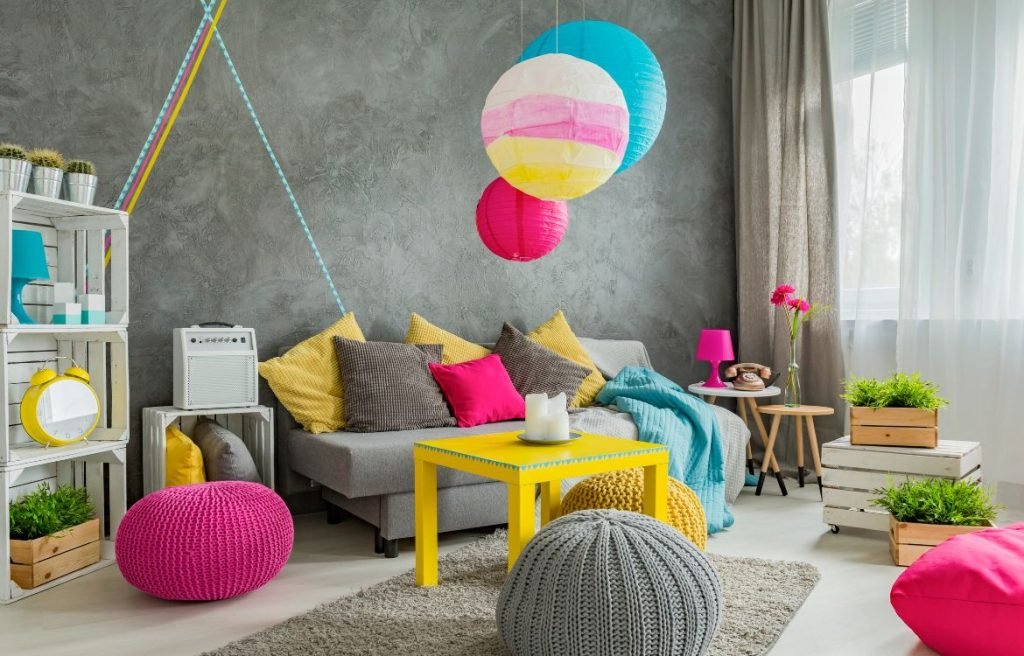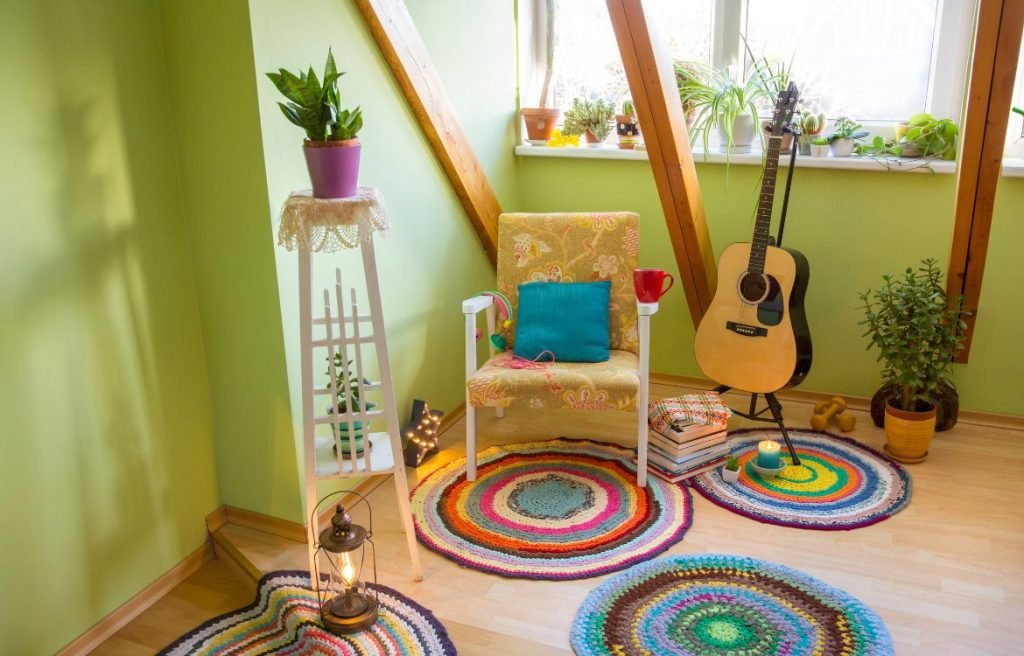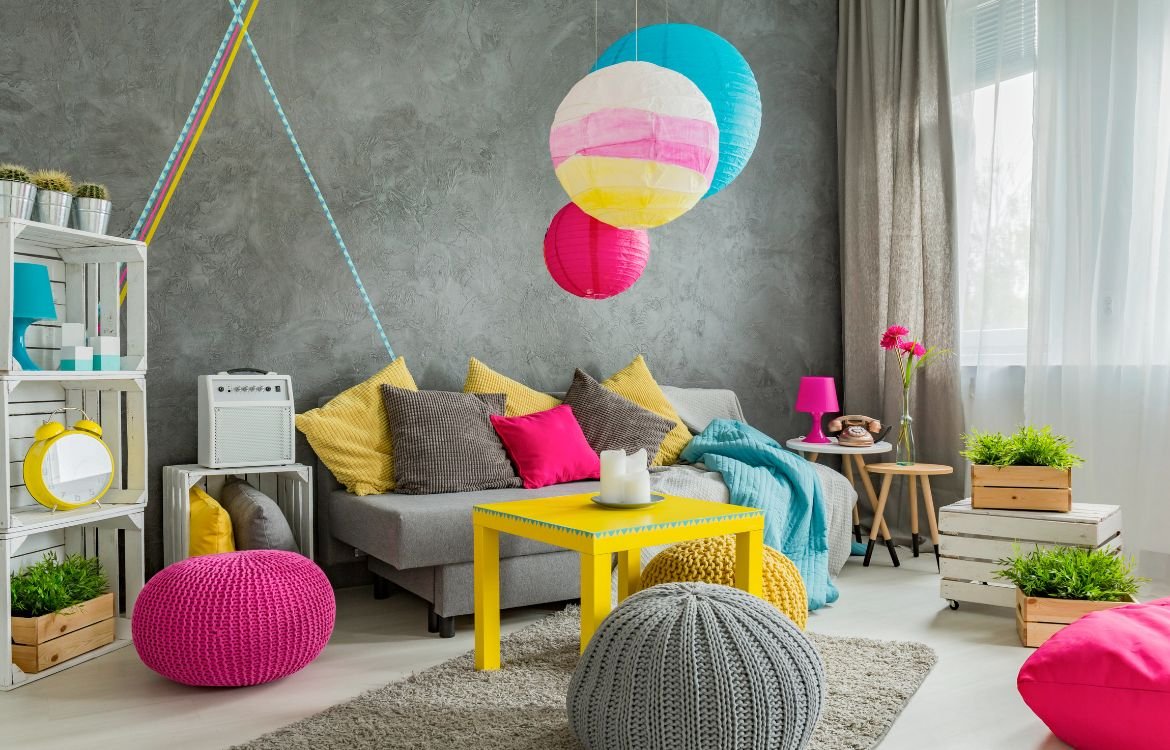Introduction
Are you ready to transform your home with a burst of vibrant style? Look no further! Welcome to our comprehensive guide on Experimenting with Bold Color Accents on Doors and Trim. If you’re a homeowner seeking to paint your house and add a touch of creativity and personality using paint colors, you’ve come to the right place.
In this article, we’ll delve into the exciting world of bold color accents, exploring unique ideas, expert techniques, and practical tips to help you achieve stunning results. Whether you’re aiming to make a statement or create a harmonious blend, we’ll inspire and guide you every step of the way. So, let’s dive in and unleash the power of color to transform your home like never before!
Experimenting with bold color accents on doors and trim
Color plays a crucial role in creating a harmonious and visually appealing space. The careful selection of colors can transform the atmosphere, evoke emotions, and reflect our personal style. Among the various elements of home design, doors and trim often provide an opportunity to experiment with bold color accents that make a statement. By incorporating vibrant hues into these key areas, you can elevate the overall aesthetics and create a captivating visual impact.
Experimenting with bold color accents on doors and trim allows you to push the boundaries of traditional home design and embrace our creativity. Gone are the days of sticking to neutral or muted tones for these architectural features. Instead, we have the freedom to explore a world of vivid shades, unexpected combinations, and eye-catching contrasts.
Benefits of using bold color accents
- Using bold color accents on doors and trim offers a multitude of benefits beyond mere visual appeal. It adds personality and character to your home, setting it apart from the ordinary. Bold colors can create a focal point, drawing attention to the architectural details and making a lasting impression.
- Moreover, they allow you to express your unique style and showcase your creativity, making your home a true reflection of your personality. Additionally, bold color accents can infuse energy and vitality into the space, instantly uplifting the ambiance and creating a vibrant atmosphere.

Choosing the right color palette
Understanding color psychology
- Before diving into experimenting with bold color accents on doors and trim, it’s important to have a basic understanding of color psychology. Colors have the power to evoke specific emotions and moods.
- Warm colors like red, orange, and yellow can create a sense of energy and warmth, while cool colors like blue, green, and purple tend to promote calmness and tranquility.
Analyzing the existing color scheme
- When selecting a color palette for your doors and trim, it’s essential to analyze the existing color scheme of your home. Take into account the colors of your walls, furniture, and decor elements. You want to choose colors that harmonize with the overall aesthetic and create a cohesive look.
- Consider whether you want to create a complementary color scheme, where the bold accents provide a striking contrast, or a monochromatic scheme, where the accents blend seamlessly with the existing colors.
Exploring different color options for doors and trim
- Neutral colors: Neutral colors like white, gray, and beige offer a timeless and versatile choice for doors and trim. They provide a clean and sophisticated look, allowing other elements in the room to take center stage. Neutral accents can act as a subtle backdrop or serve as a frame for bolder design features.
- Vibrant colors: For those seeking a more daring approach, vibrant colors bring energy and vibrancy to your doors and trim. Consider bold hues like fiery red, electric blue, or sunny yellow. These colors can create a captivating focal point and infuse the space with a sense of playfulness and excitement.
- Complementary colors: Another option is to choose complementary colors for your doors and trim. Complementary colors are opposite each other on the color wheel, creating a high-contrast and visually striking effect. For example, pairing a deep navy door with a bright coral trim can create a captivating and modern look.
Considerations for exterior vs. interior color choices
- When selecting colors for your doors and trim, it’s important to consider the context of the space. Exterior color choices may be influenced by factors such as the architectural style of your home, neighborhood guidelines, and overall curb appeal.
- Interior color choices, on the other hand, allow for more personal expression and can be tailored to the specific room’s function and desired ambiance.
Preparing for the project
Assess the condition of doors and trim
Before diving into the project of experimenting with bold color accents on your doors and trim, it’s crucial to assess the condition of these surfaces. Take a close look at the doors and trim to identify any signs of wear, damage, or deterioration.
Look for chips, cracks, or peeling paint that may require attention before proceeding. Assessing the condition will help you determine the necessary steps for preparation and ensure a smooth and long-lasting paint application.
Clean and prep the surfaces
To achieve a professional and durable result, it’s essential to thoroughly clean and prep the surfaces before painting. Use a mild detergent and warm water solution to remove dirt, grime, and grease.
Scrub gently with a sponge or soft brush, paying attention to any intricate details or crevices. Rinse the surfaces thoroughly and allow them to dry completely.
Remove old paint or finishes
If your doors and trim have layers of old paint or finishes that are peeling or cracking, it’s necessary to remove them by scraping, sanding or using chemical paint stripper before applying a fresh coat of paint.
Repair any damages or imperfections
Before you start painting, repair any trim or door damage. Fill in any cracks, holes, or dents using a suitable wood filler or putty. Smooth out the patched areas with sandpaper to create a seamless surface. Inspect the trim for loose or damaged sections and secure or replace them as necessary.

Tools and materials needed
Paintbrushes and rollers: Choose brushes that are suitable for the size and intricacy of your project. Opt for a roller with the appropriate nap length, depending on the texture of your surfaces.
Primers and paints: Choose a primer that is compatible with your doors and trim materials, such as wood or metal. Consider using durable and scrubbable options, especially for high-traffic areas. Select the colors that align with your bold accent choices, ensuring they are formulated for the specific surfaces you’re painting.
Sandpaper and putty knife:
Have sandpaper with various grits on hand, such as coarse for initial sanding and finer grits for smoothing. Ensure the putty knife is of appropriate size for the scale of your project.
Drop cloths and painter’s tape: Lay down drop cloths or plastic sheeting to cover and shield the surrounding areas. Use painters tape to mask off areas that you don’t want to paint, such as glass or adjacent walls.
Protective gear: Consider using safety goggles, a dust mask, and disposable gloves. If you’re working in a poorly ventilated area, using a respirator is advisable. Wear old clothing or protective coveralls to prevent paint splatters from staining your clothes.
How to paint doors and trims
Read our detailed, step by step guide on how to paint doors, here and how to paint trim, here.
- Remove any door hardware, such as handles, hinges, and locks. This will make the painting process easier and ensure a neat and professional finish.
- Use painter’s tape to tape off any areas that you don’t want to paint, such as glass panels or adjacent walls.
- Apply the primer evenly on the doors and trim. Follow the manufacturer’s instructions regarding drying time and additional coats if necessary.
- For interior doors, use a paint brush or foam roller in long, even strokes can provide a seamless finish. Pay attention to the direction of the wood grain or texture while painting for a consistent and professional look.
- Once the primer has dried, it’s time to apply the base color to the doors and trim. Use a brush or roller to apply the paint evenly, following the natural lines and contours of the surfaces. Start from the top and work your way down, ensuring full coverage. Take care to avoid drips or pooling of paint by using thin and even coats. Allow the base color to dry completely before moving on to the next step.
- Now comes the exciting part—adding the bold color accents to your doors and trim. Choose a color that complements the base color and adds visual interest to your space. You can paint the entire door or trim in the bold color or select specific elements, such as panels, moldings, or edges, for a striking effect. Use a smaller brush or even an artist’s brush for precise application. Take your time and be meticulous to achieve clean lines and smooth transitions between colors.
- After applying the bold color accents, allow ample drying time for the paint to cure. Follow the manufacturer’s instructions for recommended drying times between coats and for the final drying period. Avoid touching or placing objects on the painted surfaces until they are fully dried to prevent smudges or damage to the finish. Patience during the drying process will ensure a professional and long-lasting result.
- To protect the newly painted doors and trim, consider applying a clear protective finish to preserve the vibrancy of the colors and extend the life of your painted doors and trim. This can help enhance durability and make cleaning and maintenance easier. Choose a finish appropriate for the type of paint you used, such as a clear varnish or polyurethane for wood surfaces.

Maintaining and updating bold color accents
Regular cleaning and maintenance
Use a soft, damp cloth or sponge to gently wipe down the surfaces, removing dust, dirt, and any stains that may accumulate over time. Avoid abrasive cleaners or harsh chemicals that can damage the paint.
Touching up paint as needed
When you notice scratches, chipped or faded areas, touch up the paint to maintain the overall appearance of your bold color accents. Keep a small quantity of the base color and bold accent color on hand for touch-ups. Use a small brush or artist’s brush to carefully apply the paint, blending it seamlessly with the surrounding area. Regular touch-ups will ensure a consistent and polished look.
Reimagining color accents with new trends
Design trends evolve over time, and if you’re looking to refresh your space or update the look of your doors and trim, consider reimagining your bold color accents with new trends. Stay informed about the latest color trends in home design and explore options that resonate with your style and preferences. Experiment with different color combinations, textures, or finishes to create a fresh and contemporary aesthetic. Whether it’s incorporating a new accent color or exploring different techniques like ombre effects or geometric patterns, embracing new trends can breathe new life into your doors and trim.
FAQ
Should trim and door color match?
Yes, it is generally recommended to have the trim and door color match for a cohesive and harmonious look. Matching colors create a seamless flow and provide a sense of unity throughout the space.
Should interior doors and trim be the same color?
While it is not necessary for interior doors and trim to be the exact same color, they should complement each other. Choosing colors from the same color family or using shades that coordinate well creates a cohesive and visually pleasing look.
What is the most welcoming front door color?
A vibrant red front door is often considered to be the most welcoming color. It exudes warmth, adds a pop of color, and creates an inviting focal point for your home’s exterior.
What is the difference between paint trim and accent?
Paint trim refers to the application of a specific color to the edges and frames of doors, windows, and baseboards to create definition and contrast. On the other hand, an accent color is a bold or contrasting color used on specific architectural features or elements to make them stand out.
What are the three colors not to paint your front door?
Three colors to avoid for a front door are black, brown, and beige. These colors can create a lack of visual interest and may not provide the welcoming and vibrant feel that many homeowners desire for their front entry.
Should front door be lighter or darker than the house?
The front door can be either lighter or darker than the house, depending on the desired effect. A lighter front door can make the entryway feel more open and welcoming, while a darker front door can create a dramatic and sophisticated look.
What is the most popular color for internal doors?
White is the most popular color for internal doors. It is a versatile choice that complements various interior styles and allows for flexibility in decor choices.
Should trim be lighter or darker?
The trim can be either lighter or darker than the wall color. Lighter trim creates a clean and airy feel, while darker trim adds contrast and depth to the space. The choice depends on the desired aesthetic and the overall design scheme.
Should interior trim be darker or lighter than walls?
There is no hard and fast rule regarding whether interior trim should be darker or lighter than the walls. Both options can work well depending on the desired effect. Lighter trim can create a subtle and cohesive look, while darker trim adds visual interest and definition.
Can baseboards and door trim be different colors?
Yes, baseboards and door trim can be different colors. It can be a design choice to create contrast and visual interest. However, it is important to ensure that the colors coordinate and complement each other to maintain a cohesive overall look.
Is it okay to have different color trim in different rooms?
Yes, having different color trim in different rooms is perfectly acceptable and can add visual interest and individuality to each space. It allows for personalization and the opportunity to create unique atmospheres within each room.
How do I choose an interior door color?
When choosing an interior door color, consider the overall color scheme of the room and the desired mood or atmosphere. Neutral colors like white, gray, or black are versatile and timeless choices. Bold or contrasting colors can be used to make a statement or create a focal point. Consider the room’s style, natural light, and existing decor to guide your decision.
Conclusion
Thank you for joining us on this journey of exploration into the world of Experimenting with Bold Color Accents on Doors and Trim. We hope this article has provided you with valuable insights, inspiration, and the confidence to embark on your own painting project.
Don’t be afraid to step outside the box and unleash your creativity when it comes to home design. Embracing bold color accents on doors and trim gives you the opportunity to infuse your space with uniqueness and individuality.
It’s a chance to break free from conventional norms and create a home that resonates with your personality. Experiment with different color palettes, textures, and finishes to discover combinations that speak to you and transform your living environment into a true reflection of your style.
At Horizon Painting, we understand the importance of creating a home that truly reflects your personal style. If you’re ready to take the next step and bring your vision to life, don’t hesitate to reach out to us. Our team of experts is here to assist you in achieving the stunning results you desire.
Remember, every brushstroke is an opportunity to transform your space and make it uniquely yours. Contact us today and let’s make your home a masterpiece of color and creativity!
